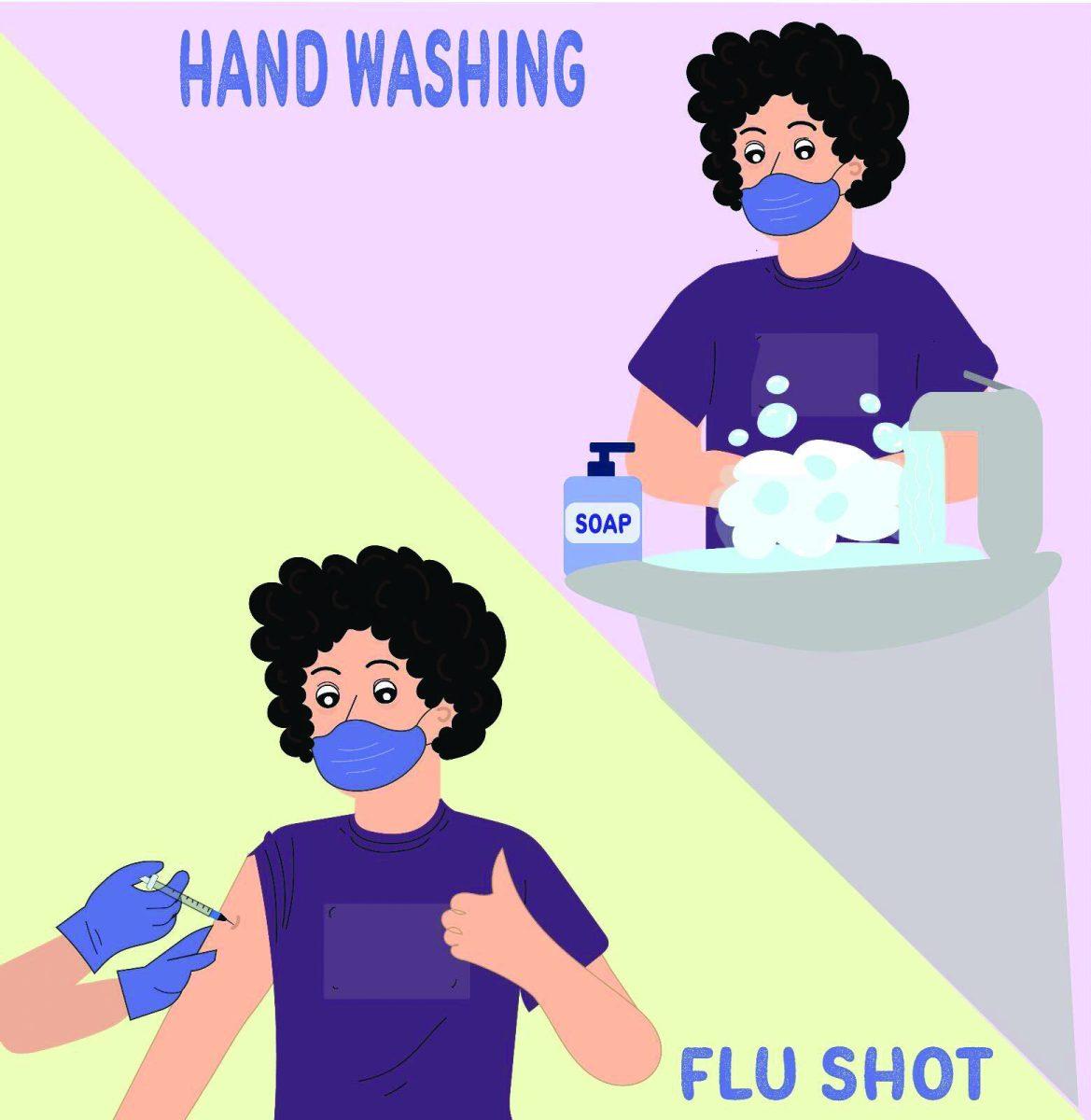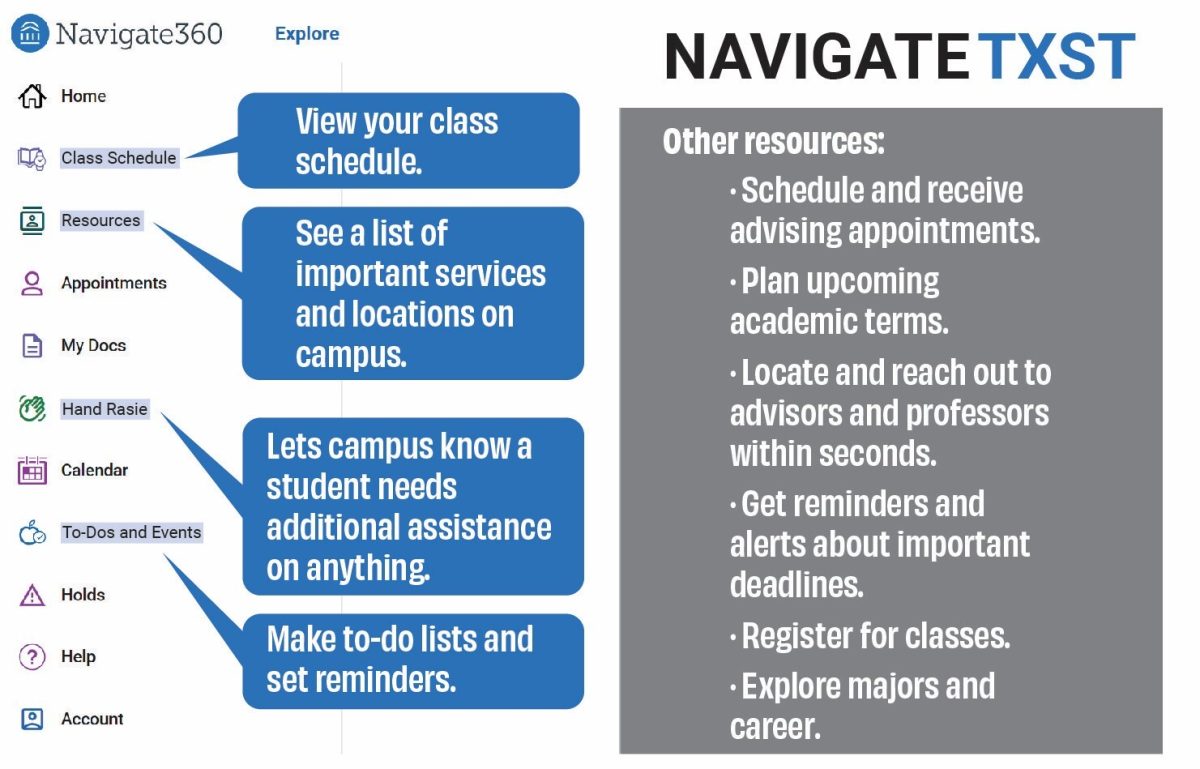This winter is different than the ones prior as the cold, flu and COVID-19 have continued to wildly spread across communities. Dr. Emilio Carranco, assistant vice president for student affairs and director of the Student Health Center, said viruses spread earlier this season causing a worse winter than in previous years.
“We had a very early flu season, we saw very high levels of flu activity in the state of Texas,” Carranco said. “We saw a lot of people developing serious illness with the flu so we saw that earlier this season than in other seasons.”
Carranco said that while the flu may be starting to decline, other viruses such as Rhinovirus, which causes the common cold, are continuing to rise and infect individuals.
According to Carranco, the Student Health Center can provide prescriptions for these viruses to help students who cannot get to pharmacies off campus.
Rodney Rohde, professor and chair of the Clinical Laboratory Science Program at Texas State, said the weather is a large factor.
“When it’s cold weather […] the humidity goes way down,” Rohde said. “That’s because there’s no moisture in the air and when that happens, viruses can do a better job of staying airborne because there’s nothing to pull them out of the air.”
Another explanation of these diseases spreading during the winter according to Kim Deming, an MSN registered nurse, is because more people are gathering indoors rather than having outdoor experiences.
“We usually see a rise in flu, cold and COVID cases in the winter due to many gatherings,” Deming said. “These would include schools and colleges starting classes, holiday parties, social events, and travel for holiday.”
While these viruses continue to spread, individuals can still take prevention measures to protect themselves from these viruses when they spread easiest.
The first measure is to simply identify the symptoms experiencing and know when it is best to stay home. One of the struggles with this step though is that a lot of the diseases that spread during the winter have similar symptoms.
“One of the headaches with COVID-19, allergies, influenza is that all of them have very similar symptoms,” Rohde said. “This is very typical because respiratory viruses tend to give you simple symptoms.”
According to Rohde these symptoms can include headaches, cough, fatigue, sneezing, runny nose and a sore throat. However, there are some differences between the common cold, the flu and COVID-19.
“With a cold you will never have fever but [with] COVID-19 or flu, you tend to get fever,” Rohde said. “With COVID you sometimes lose your taste and smell; we’re not seeing that as much with the common cold or with the flu.”
Carranco recommends that the very first step one should take when feeling these symptoms is to take a COVID-19 test to rule out the chance of COVID-19. These tests can be found at the Student Health Center on campus.
“If you get symptoms of a cold, you should always rule out COVID-19,” Carranco said. “If you rule that out then at least you know you don’t have to isolate for five days.”
There are simple preventative measures that every person can take every day such as covering coughs and sneezes but there is another one that Carranco said many people seem to overlook, and that is washing hands.
“Make sure you wash your hands often especially before you eat,” Carranco said. “This time of the year people are sick and not washing their hands enough and so they’re contaminating handles and doorknobs […] and all kinds of things so the best thing to do is wash your hands often.”
Vaccinations are another preventative measure that one can take to protect themselves from these winter diseases. While vaccinations are not 100% fool-proof, most physicians recommend them to curb the transmittance of most viruses.
“Certainly, people should be up to date with their vaccinations, not just for COVID-19 but for any other preventable infection,” Rohde said. “If [your] body has no issues with vaccines, you should always be up to date on vaccination.”
Carranco recommends going to visit a doctor if symptoms are not getting better after two to three days to properly diagnose the issue.
“If you’re not getting better after two or three days, it’s time to go see the doctor because more than likely you’re not going to be able to figure it out on your own,” Carranco said. “The doctor can help you figure out what’s going on and figure out what the right treatment is.”
Rohde recommends looking at the winter months in a new light and said people should take preventative measures not only to protect themselves but the entire community.
“You really should be thinking about the people around you that might be immunocompromised […] any type of infection can be very detrimental to those individuals,” Rohde said. “So try to think about [measures] in terms of community health.”
Pandemic, cold and flu season: What to expect returning to campus
January 16, 2023
Donate to The University Star
Your donation will support the student journalists of Texas State University. Your contribution will allow us to purchase equipment and cover our annual website hosting costs.




























